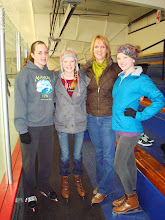Social learning theories assert that human knowledge is constructed mainly through interaction with others and the environment. Dr. Michael Orey (Laureate Education, Program 8, 2009) tells us that social learning theory originated with Lev Vygotsky, who coined the term “Zone of Proximal Development,” or ZPD, to describe the current stage of a person’s ability to learn based on previously attained knowledge. Vygotsky declared that in order to expand one’s ZPD, there must be interaction between the learner and a “More Knowledgeable Other” or MKO. This MKO may be a parent, teacher, peer, or even a computer. Under the social learning theory, interaction with any person or object in the learner’s environment constitutes social interaction.
There are a variety of educational technology tools that allow teachers to implement social learning practices in their instruction. Pitler, Hubbell, Kuhn, and Malenoski (2007) draw attention to some of these tools that can be applied to cooperative learning. Cooperative learning is an educational approach that allows students to work collectively in groups on tasks or projects to improve their learning. Of particular interest to me were the suggestions for using multimedia tools to create videos. This is a project I use in my eighth grade algebra classes. Working in groups of three or four, students choose an algebra topic and then write a skit, song, or advertisement which is filmed and edited for the purpose of teaching others that topic. The rubric and breakdown of group roles/tasks provided by Pitler et al. (2007) are very well done, and I look forward to adding some of their ideas to the materials I have already created.
Cooperative learning can also be achieved with people outside the students’ classroom through interactive websites like Teen Second Life and the JASON Project which create virtual communities for exploration and collaboration. Other tools allow for online collaborative organizing using shared calendars, bookmarks, documents, chat, and more. These tools allow learning groups to organize and complete projects from anywhere they have Internet access. Hargis and Wilcox (2008) collaborated from their respective offices in California and Florida to complete on their online journal article entitled Ubiquitous, Free, and Efficient Online Collaboration Tools for Teaching and Learning. I would recommend this article as an excellent resource for understanding how Google organizing tools work as well as how Skype, the online communcations software, and Second Life, the virtual community named earlier, work and can be put to use in the classroom. Students using these types of resources are exposed to an unlimited number of opportunities for collaboration.
These instructional strategies correlate directly with the principles of social learning theories by allowing learners to use technology to interact with others to expand their knowledge. As cited by Pitler et al. (2007), Wong and Wong made an excellent observation when they said, “Cooperative learning is not so much learning to cooperate as it is cooperating to learn” (p. 143.)
References
Hargis, J., & Wilcox, S. (2008, October). Ubiquitous, free, and efficient online collaboration tools for teaching and learning. Turkish Online Journal of Distance Education (TOJDE), 9(4), 9–17. Retrieved March 24, 2010, from http://web.ebscohost.com.ezp.waldenulibrary.org/ehost/pdf?vid=3&hid=105&sid=143437fa-ffed-4d37-80df-665c1877c06d%40sessionmgr113
Laureate Education, Inc. (Executive Producer). (2009). Bridging learning, theory, instruction, and technology. [DVD]. Baltimore: Author.
Pitler, H., Hubbell, E., Kuhn, M., & Malenoski, K. (2007). Using technology with classroom instruction that works. Alexandria, VA: ASCD.
Wednesday, March 31, 2010
Subscribe to:
Post Comments (Atom)




Susan,
ReplyDeleteI agree that collaborative learning is extremely beneficial and can enhance student learning. I like your algebra activity where the students can demonstrate their understanding through a creative outlet. This example of social learning may help some students clarify their understanding of algebraic concepts in a fun manner. I also found the rubric outlined in our text to be extremely beneficial in depicting the expectations for cooperative learning activities. Meaningful and active learning can take place when students are provided with clear expectations.
Erika
Susan,
ReplyDeleteI really like what you do with your math students, having them film a skit or song in order to teach other classmates. I am curious as to the successfulness of the every group member. Is the level of engagement high? Does every student seem to want to participate willingly? On average, how many of these films do the students create in a year? I am really interested to know how your students perform on this project; I would really like to try it sometime if is such a success for your learners. Thank you for sharing such a neat idea!
Allison
Susan,
ReplyDeleteI too feel that collaboration can be a very effective way for students to strengthen their learning. I really like your idea of having students create a skit about an algebra topic. Not only are you tying in technology into your class, you are allowing for reciprocal teaching to occur. As one of our resources stated last week, when students must teach a topic to their classmates, the information is more firmly etched in the mind of the presenter.
I would like to look into using the JASON Project with my science classes. After reading about it and browsing the website, it seems to be a wonderful social learning tool that would be very engaging and fun for all my students. Do you know anyone who currently works with the JASON Project?
Thanks for your thoughts,
-Jonas
Susan,
ReplyDeleteI enjoy hearing about the activities that you have your students take part in. Students love creating and performing skits. I too often use this strategy in my math classes to remember steps or to remember why they need to perform a certain operation I am also going to check out the site that you mentioned in your post.